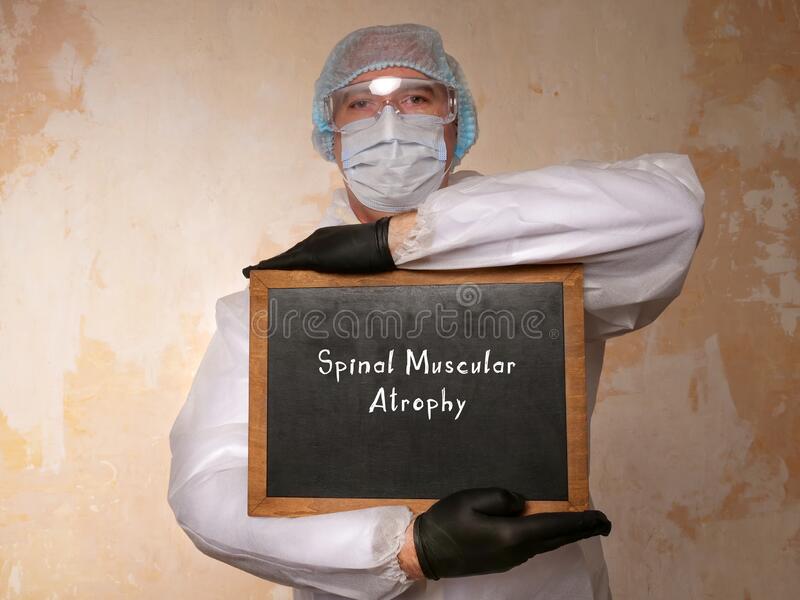

- Call 908 543 4390
- Email
- Dr.Joni Redlich PT,DPT



Here at KidPT, we treat kids with many different forms of disabilities, and we hear all the time how tricky it is to find places that are accessible and disability friendly for quick, family fun getaways. To help fill all your kiddo’s weekend fun needs, we thought we would compile a list of disability friendly travel destinations within driving distance that have been visited and approved by families with adults or children with disabilities.
Looking to travel close by? Try some of these disability friendly destinations located within driving distance of New Jersey for a weekend getaway or short vacation!
Washington DC is the city where the Americans with Disabilities Act was passed and made a law and how fitting that it is such an accessible city! Nearly all of its attractions, shops, and restaurants are wheelchair accessible. This includes the National Zoo, Capitol Building, Lincoln Memorial, all the Smithsonian Museums, the Washington Monument, and other famous landmarks across the city. The metro is also wheelchair accessible and a very easy way to explore the city, you can roll into the metro with ease and then take an elevator to get to the metro lines. The city is also mandated to make all taxis wheelchair accessible too, which will open up even more possibilities for traveling throughout the city. See below for a great guide to all the wheelchair accessible locations throughout the city.
https://magazine.trivago.com/the-ultimate-accessibility-guide-to-washington-dc/
Shenandoah National Park is beautiful and full of nature AND has wheelchair accessible trails. Two of the accsssible trails of note are the Limberlost Trail and the Rose River trail, which are both smooth and offer stunning landscape views.
https://www.nps.gov/shen/planyourvisit/accessibility.htm
The Sesame Place is an amazing theme park for kids with many different needs. It is based on every kids favorite television show, Sesame World, and offers theme park rides, water rides, and shows and parades too. One of the real benefits of the Sesame Place is that it is also a Certified Autism Center (CAC), and was the first theme park to earn this designation. Plus, it is wheelchair accessible too. Upon entering the park, they offer a “Ride Accessiblility Program” questionnaire that will let you know which attractions will fit your family’s needs the best.
https://sesameplace.com/philadelphia/
Smugglers’ notch has many options for the whole family, like various fun camp activities and options, many fun pools to choose from, and most importantly, the Smugglers’ Notch Adaptive Program (SNAP). SNAP features many adaptive activities for kids, such as Arts and Crafts, guided hiking, kayaking, mini golf, Nature time, S.T.E.M activities, Swimming and Adaptive Swimming Lessons, and Waterslide activities. The mountain environment is also very relaxing for parents, with nice mountainside condos available.
https://www.smuggs.com/pages/summer/kids/adaptive_programs.php
Legoland is a special needs-friendly and wheelchair accessible theme park that any lego lover is sure to fall in love with! They also offer a list of recommended attractions depending on your child’s disability, and there are many wheelchair accessible attractions throughout the theme park! Most of their rides and attractions are wheelchair accessible, like DJs Dizzy Disco Spin, Merlin’s Flying Machine, The Dragon, and so many more!
https://www.legoland.com/new-york/plan-your-visit/know-before-you-go/special-situations/
Resources:
https://parade.com/1002319/marynliles/handicap-vacations/
https://enablingdevices.com/blog/best-vacation-spots-handicap-access/
https://blog.cheapism.com/wheelchair-accessible-vacations/
https://www.gorving.com/tips-inspiration/expert-/10-most-accessible-places-visit-us

The Summer Is A Magical Time For Childhood.
It allows an increased opportunity for outdoor play, creativity, exploration of new environments, unstructured social interactions with peers, and travel to new places via day trips or family vacations.
Whether your child spends more time outdoors with neighborhood friends, experiences nature at camp, ventures to the park with the family, goes on rides at amusement parks or carnivals, plays in the sand at the beach, goes tubing or boating, bikes around the block, splashes in the sprinklers or a pool, creates with chalk masterpieces on the driveway, or camps in the woods; your child is in a sensory wonderland.
All these experiences provide your child with significant opportunities for movement and diverse sensory experiences that are so important to help develop their sensory integration systems and gross motor skills and promote self- regulation.
No Wonder it is a challenge to transition from this sensory and movement rich environment back to the classroom where our children are expected to sit still and focus on their academic curriculum.
That’s why we have compiled this Back to School Movement List. These items may help if your child has an especially challenging time with this transition by incorporating both movement and sensory activities into the school environment in a classroom friendly way. These movement and sensory outlets promote a calm demeanor and an enhanced ability to focus and concentrate so that our kiddos are ready to learn about our crazy, cool world.
If your kid is: always wiggling, shifting, rocking in, or getting out of their chair or sitting with slouched posture.
How it helps: Improves posture, promotes active sitting, activates the core for improved postural stability, and provides proprioception and body awareness.,
If your kid is: often tapping their feet on the floor, pushing the top of their feet into the ground or the legs of the desk, wrapping their feet behind the legs of their chair, wiggling in their chair, getting out of their chair, distracted, anxious, or sitting with slouched posture.
How it helps: Provides proprioception and body awareness, lower limb movement, deep pressure and joint compression with rebound of the band, resistance for hard work which can be grounding for your child.
If your kid is: always chewing on their pencils, biting their nails, gnawing on their shirt/clothes, anxious, distracted, clenching their jaw, or grinding their teeth.
How it helps: deep pressure input, movement and heavy work of the jaw, activation of muscles in jaw and neck which promotes improved postural stability, proprioception and body awareness,
If your kid is: often tapping their feet on the floor, pushing the top of their feet into the ground or the legs of the desk, wrapping their feet behind their chair legs, wiggling in their chair, getting out of their chair, distracted, anxious, or sitting with slouched posture.
How it helps: Provides proprioception and body awareness, lower limb movement, resistance for hard work, deep pressure input, and exploration of texture with the choice of the smooth or bumpy surface.
If your kid is: often fidgeting in their chair, playing with their hair, distracted, anxious, getting out of their chair, talking excessively in class, clenching their hands, picking at their skin, or tapping their fingers or pencils on the desk.
How it helps: Provides proprioception and body awareness, movement, resistance, exploration of texture, an outlet for restlessness, and activation of hand, arm, and shoulder muscles.
This is not an exhaustive list and there is no such thing as one size fits all. Consider the strengths, sensory preferences, and movement needs of your child. If you need help navigating what your child’s needs are, try booking an occupational therapy consultation near you. The summer is not over yet, so keep basking in the sensory and movement wonderland.
Spinal muscular atrophy (SMA) is a genetic disease that affects the central nervous system, peripheral nervous system, and voluntary muscle movement (skeletal muscle). A majority of nerve cells that control muscles are located in the spinal cord. SMA primarily affects muscles, because they don’t receive signals from specific nerve cells, called motor neurons. When muscles aren’t stimulated by nerve cells, they get smaller or atrophy. Because SMA involves the loss of nerve cells called motor neurons in the spinal cord, it is classified as a motor neuron disease.
Degree of motor function decrease is roughly correlated to the age at which SMA symptoms start. Generally, kids who have symptoms at birth or in infancy usually have the lowest level of functioning (type 1). As a rule, later-onset SMA with a less severe course (types 2 and 3, and in teens or adults, type 4) corresponds with progressively higher levels of motor function.
Chromosome 5 SMA is caused by a deficiency of a motor neuron protein called SMN, for “survival of motor neurons”, which appears necessary for normal motor neuron function. SMN has a crucial role for gene expression in motor neurons.

The scope of SMA symptoms are broad, and symptoms range from mild to severe. Typically the “proximal” muscles (closer to the center of the body) are the most affected in the body. SMN-related SMA presents with weakness of the voluntary muscles as a primary symptom and often include shoulders, hips, thighs, and upper back. Lower limbs seem to be more than upper limbs, and there is a decrease in deep tendon reflexes. If the muscles used for breathing or swallowing are impacted, there may be complications with those functions. Similarly, back muscles weakening may result in development of spinal curvatures.
Recently, there have been exciting treatments for various types of SMA that have been complete game changers for individuals who have the disease. Current research strategies have focused on increasing the body’s production of the SMN protein that’s lacking in the chromosome 5-related forms of SMA. Methods include approaches to increase motor neuron survival in adverse circumstances.
The Food and Drug Administration (FDA) approved Spinraza (nusinersen) for the treatment of SMA, on Dec. 23, 2016. Spinraza is designed to treat the underlying defect in SMA, meaning it potentially might be effective at slowing, stopping, or possibly reversing the symptoms of SMA.
In May 2019, the FDA approved Zolgensma (onasemnogene abeparvovac-xioi), which represents the first gene-replacement therapy for a neuromuscular disease. Zolgensma is a one-time intravenous infusion, and is used to treat pediatric patients younger than 2 years of age with SMA, who exhibit bi-allelic mutations in the SMN1 gene. This includes those who are presymptomatic at diagnosis. Read more information at: FDA Approves AveXis’ Zolgensma for Treatment of Spinal Muscular Atrophy in Pediatric Patients.
Additionally, the FDA approved risdiplam (brand name Evrysdi) in August 2020, for the treatment of SMA in adults and children two months of age or older. It is an oral medication that functions to raise SMN protein levels, by boosting production from the SMN2 “backup” gene.
For a detailed and simple-to understand overview of SMA, visit the Muscular Dystrophy Association website for the SMA fact sheet at:
https://www.mda.org/sites/default/files/2020/11/MDA_SMA_Fact_Sheet_Nov_2020.pdf
Currently, one of the best known people with SMA is Shane Burcaw. Shane has been affected by SMA most of his life, yet it doesn’t define him fully or keep him from living a productive life as a disability advocate, speaker and author. Together with his wife, Hannah, they run a popular YouTube channel ,“Squirmy and Grubs” and share their relationship story with the world, with the hope to change the way society thinks about disability.
The link below is a video on the channel where Shane talks about his diagnosis and early life. It also showcases the amazing relationship he and his wife share.
